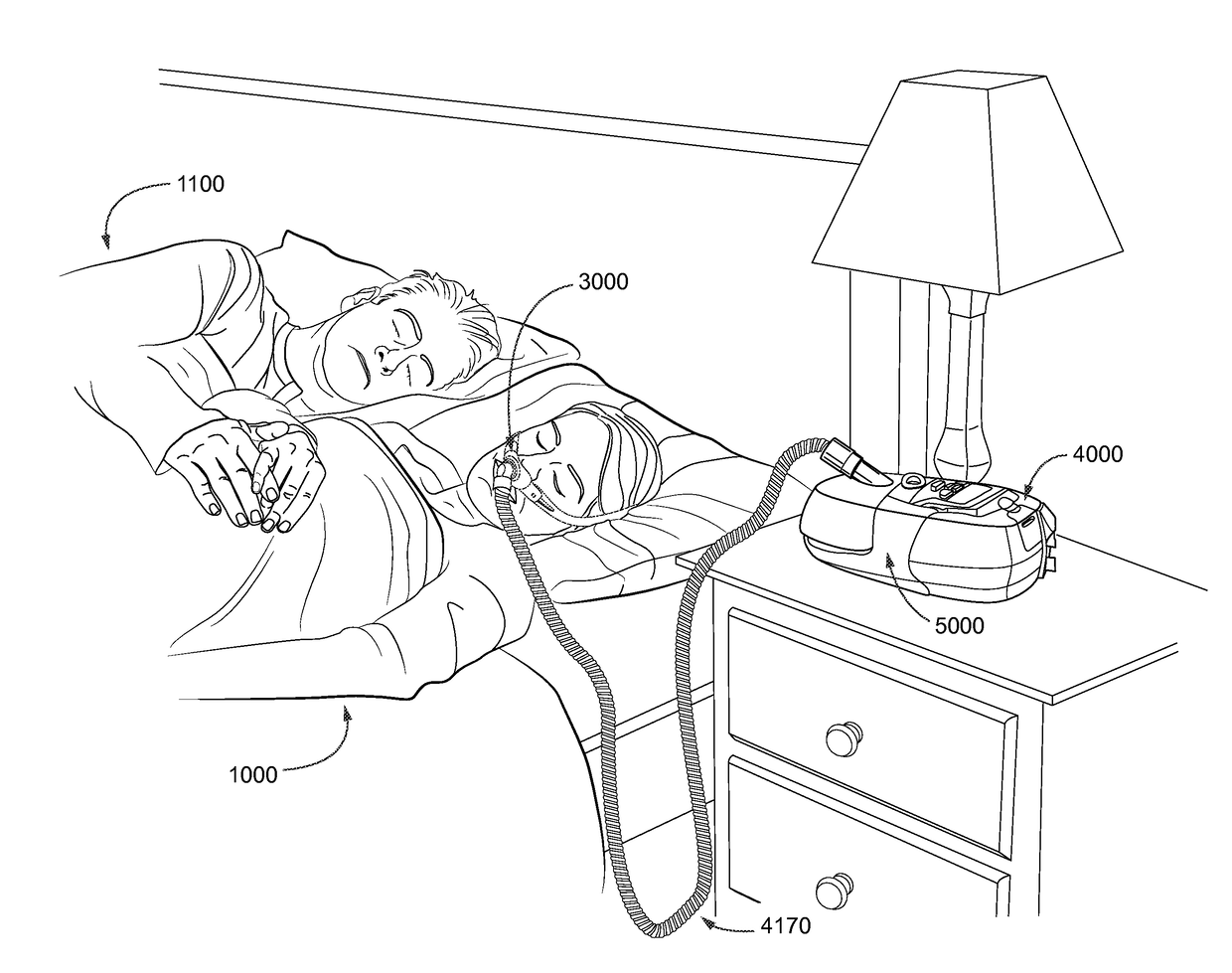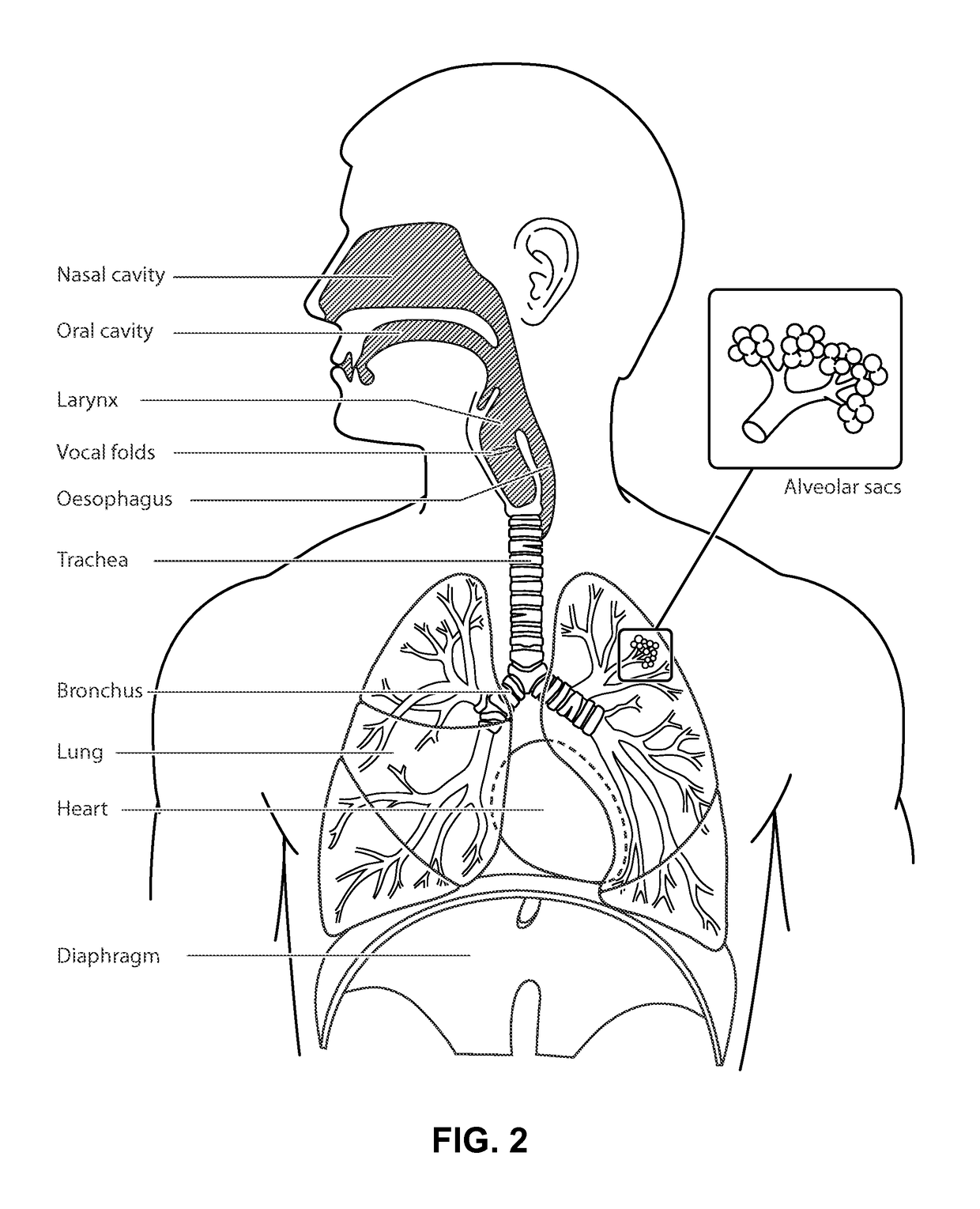Self-optimising respiratory therapy system
a technology of respiratory therapy and self-optimisation, which is applied in the field of self-optimising respiratory therapy system and medical devices, can solve the problems of cardiovascular disease and brain damage, excessive daytime somnolence, and harmful csr, and achieve the effects of improving comfort, cost, efficacy, and ease of us
- Summary
- Abstract
- Description
- Claims
- Application Information
AI Technical Summary
Benefits of technology
Problems solved by technology
Method used
Image
Examples
example 1
[0418]A method of treating with, or monitoring use of, a respiratory pressure therapy device for treating a respiratory disorder of a patient, the method comprising: analysing in a processor data relating to respiratory therapy delivered to the patient via the respiratory pressure therapy device to generate data in the processor representing a compliance prediction about the progress of the respiratory therapy; selecting an action with the processor to improve the respiratory therapy based on the data representing the compliance prediction; and taking or prompting the selected action with the processor to improve the respiratory therapy.
example 2
[0419]A method according to Example 1 (or any one of the preceding Examples), wherein the respiratory therapy is in accordance with a therapy program, and the action is an adjustment to the therapy program.
example 3
[0420]A method according to Example 2 (or any one of the preceding Examples), wherein the therapy program comprises an engagement rule set, each rule in the rule set comprising a condition and an engagement action.
PUM
 Login to View More
Login to View More Abstract
Description
Claims
Application Information
 Login to View More
Login to View More - R&D
- Intellectual Property
- Life Sciences
- Materials
- Tech Scout
- Unparalleled Data Quality
- Higher Quality Content
- 60% Fewer Hallucinations
Browse by: Latest US Patents, China's latest patents, Technical Efficacy Thesaurus, Application Domain, Technology Topic, Popular Technical Reports.
© 2025 PatSnap. All rights reserved.Legal|Privacy policy|Modern Slavery Act Transparency Statement|Sitemap|About US| Contact US: help@patsnap.com



